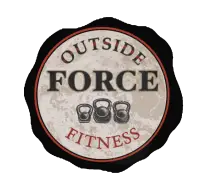Sprinting is an underutilized training tool. It is often used only by high-level athletes but, in my opinion, most people should incorporate some form of sprinting into their workout routine.
What Is Sprinting?
Sprinting is defined as running at full speed.
Your body cannot maintain this speed for much longer than 30-45 seconds at a time.
Is Sprinting Better Exercise Than Jogging?
This question is the same as asking, “Is it better to lift 40 pounds than 30 pounds?”
Sprinting only differs from jogging in that you’ve increased the intensity to a maximum, or near-maximum effort. The body works in a stimulus-response manner. If you increase the stimulus, you’re going to increase the response.
Just be sure that you don’t increase the stimulus so much that you injure yourself.
Does Sprinting Build Muscle?
Sprinting builds a lot of muscle in your legs.
The evidence: Have you ever seen a weak and skinny sprinter? These guys and girls are usually very muscular. It is the long-distance runners that are paper thin.
Studies also show that sprinting increases testosterone levels, which is key for building muscle.
Can You Sprint Barefoot?
Theoretically and technically – yes. But when this is brought into practice, you’ll most likely run into problems right away:
1. The first problem is that since you’ve worn shoes most of your life, the smaller muscles in your feet have atrophied. They haven’t had to do much work, so they withered away. It’s easy to injure yourself in this situation.
2. The actual skin of your feet is also not up to the impact of the ground. People who walk barefoot all day have some serious callouses. Those of us who wear shoes most of the time have nothing in comparison, so it is easy to rip your foot open.
3. If you’ve been running with shoes for any time, you’re most likely a heel striker. Try striking your heel on the ground with bare feet and you will quickly be in pain and out of the game. There is a technique to running barefoot and most of us have to learn it from scratch.
In all actuality, humans were born barefoot and are engineered to be able to sprint barefoot. But with modern cushioned shoes, we are deviating further and further away from our barefoot roots.
If you do ever try to start running barefoot, do it under the supervision of a running coach who has done this himself and has successfully trained others as well. Don’t just jump into it blind.
Can You Use Sprinting To Lose Weight?
Yes, adding sprints into your workout program can be a great way to burn fat. But it isn’t for everybody.
Going sprinting is like taking an automobile to a closed track and taking it up to top speed. Not all vehicles will survive without some damage. You may have a “trick knee” or a back that sometimes acts up, and without a proper warm up and supervision you are at risk of injury.
Sprinting burns fat by increasing your metabolism for hours after the workout. Sprinting also increases testosterone and builds muscle – both of which contribute to fat burning and weight loss.
Additional note: if you have 100 pounds to lose, don’t even think about sprinting.
Is Sprinting Aerobic or Anaerobic Exercise?
Sprinting is anaerobic exercise. Anaerobic means without oxygen.
When you are exerting yourself to 100% of your capacity, fat is not the main fuel your body is using. At that level of exertion, your body mainly uses the glucose (sugar) in your blood and this fuel does not require oxygen with it in order to be used as fuel.
What Are the Risks of Sprinting?
Running as fast as you can is actually pretty rough on the body. The risk of injury is high compared to walking and jogging.
I’ve seen people strain hamstring muscles, calf muscles and hip flexors.
Most injuries are due to not warming up enough.
Do You Have To Warm Up Before Sprinting?
Yes, absolutely it is necessary to warm up before sprinting.
There are various warm up exercises for runners and sprinters that apply.
A proper warm up increases blood flow, increases the temperature of your muscles, makes them more pliable, stimulates nerve activity, and gets you sweating.
Most people are surprised when they do warmups with me because they start sweating as if it was a workout. Make no mistake here – warmups literally warm up your body to the point where you sweat. If you’re not sweating, you’re not warmed up.
What Type of Stretching Should I Do Before Sprinting?
Dynamic stretching should be done before you sprint.
If you do a bunch of static stretching, and you’re trying to compete for time, then your time is likely to suffer. This is because static stretching has been shown to decrease nerve activity in the muscles. You definitely do NOT want decreased nerve activity in areas of the body that you are about to work at maximum effort.
Stretches can be incorporated into a proper warm up in between bouts of work.
What Speed Is Sprinting?
We all have a different maximum speed of running. This is based on all sorts of things, but a major one is body size. For example, a ten-year-old may have a maximum speed of 7 miles per hour and an 18-year-old has a maximum speed of 13 miles per hour.
I would say that anything above 10 miles per hour would be at or near sprint speed.
Can You Sprint in Other Sports Than Running?
Yes, the concept of sprinting can be applied to all sorts of exercises such as rowing, swimming, skating, or cycling.
The who idea of sprinting is that you are at or near a maximum speed that cannot be sustained for longer than about 60 seconds. So, work out how fast you can possibly go when you are swimming and do that pace for 30-45 seconds. Then do intervals of it.


